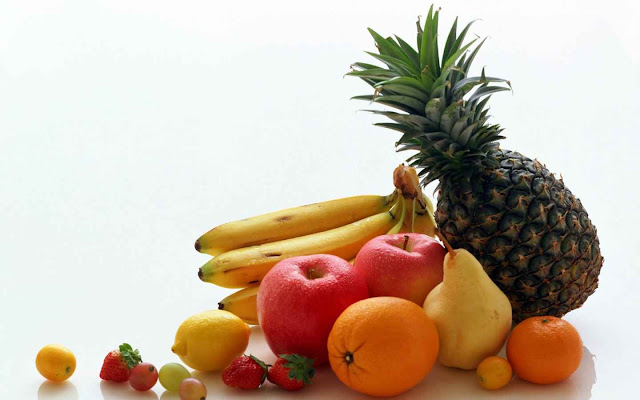
A common misconception when it comes to healthy eating is that healthy food has a characteristically indescribable taste: Healthy. Well, dismiss that frame of mind right now and never let it return; that is an utterly false belief. Healthy is not synonymous with gross. Quite frankly, healthy foods come in all shapes, sizes, and tastes, and shouldn’t be subjected to this unfair assessment.
It is possible to combine scrumptiously nutritious foods and end up with a tasty meal or perfect snack. Here are 10 of the healthiest foods (some of which may be surprising), and ways to incorporate them into your eating habits.
Top 10 Healthiest Foods
Potatoes
Contrary to popular belief, potatoes are more than just starchy vegetables that shouldn’t be touched. True, they are a carbohydrate heavy food, but not a refined source of carbohydrates, and they provide additional health benefits that shouldn’t be dismissed. Sweet potatoes in particular are filled with healthy nutrients. The orange color indicates they are chock full of beta carotene, which is essential for proper visual function, physiological processes, and its potential antioxidant quality. This 140 calorie vegetable also contains a hefty percentage of the RDA of vitamin C, calcium, iron, and fiber. Its low sodium content makes it an ideal choice, especially in during winter when they are at their peak. Try making them into baked sweet potato fries or a sweet potato casserole for the next family gathering.
Milk (1% Low-Fat or Skim)
Milk is one of the most potent beverages and wisest choices in terms of nutrient density. Its abundance of calcium and protein makes it ideal for growing children and adults. The low-fat and skim milk options are virtually fat free and the cholesterol content is negligent. Milk can be eaten with cereal or oatmeal, mixed with a squirt of chocolate syrup, or used in baked goods.
Broccoli
Broccoli is a dark green cruciferous vegetable that provides doses of potassium, folate, fiber, and calcium. It also has considerable amounts of vitamins C, K, and A, which provide antioxidant benefits along with other physiological functions, such as aiding with blood coagulation processes with the vitamin K. Other than this, broccoli has trace amounts of just about every vitamin and mineral, making it a superb vegetable choice. Melt 1 or 2 ounces of cheese over steamed broccoli with a few cracker crumbs on top. This makes for a crunchy, satisfying side dish.Leafy Greens
Leafy green vegetables, including spinach and kale, or simply full of vitamins and nutrients essential to bodily functions. They have manganese, folate, vitamins A and K, and fair amounts of iron and magnesium. You may be wondering what all of these vitamins and minerals are good for: well, as a collective group, just about everything! Eating spinach can help protect against osteoporosis and arthritis by reducing inflammation. Toss fresh spinach in a bed of mixed greens for a tasty and nutritious salad.
Blueberries
Have you ever heard the saying, “blueberries are good brain food”? Well, this may very well be true. They are said to help with short-term memory. Berries, especially blueberries, are rich in antioxidants, which help protect body cells and possibly prevent the development of cancer. A whole cup has about 80 calories. The fiber and vitamin C content aid in digestion and immune system protection, respectively. These baby blues are full of phytonutrients as well, making for the perfect fruit snack. Top a low-fat vanilla yogurt with a handful of blueberries for a delicious breakfast.Salmon
Omega-3 fatty acids in fish are the most attractive component for its nutritional benefits because of its essential role in brain function and growth and development. Salmon is an exceptionally good source for this fatty acid that our bodies cannot make on its own. Grill salmon with a little seasoning and serve over a serving of rice pilaf for a satisfying meal.
Oats
Oats have a special fiber that has been shown to lower cholesterol. Eating high fiber foods is said to reduce the risk of heart disease. In addition, they are high in manganese. Having a bowl of oatmeal in the morning with a teaspoon of cinnamon sprinkled on top with keep you full until lunch, and provide you with a plentiful serving of daily fiber.
Garlic
Garlic is an herb known for its therapeutic effects. It is a good source of manganese, selenium, and vitamins B6 and C. Garlic consumption is said to reduce the risks for heart disease and atherosclerosis, and have other cardiovascular benefits. Garlic is a multifunctional herb because it can be added to just about any dish, usually in the early stages of cooking, so its flavor penetrates the entire item.
Tomatoes
Tomatoes are an excellent source of lycopene, which is an antioxidant with caner-preventing properties. Use chopped tomatoes in place of canned in any recipe for a fresh, juicy taste.Nuts
Yes, nuts are rather high in calories and (unsaturated) fats, but they are rich in protein, fiber, and phytonutrients. Walnuts and almonds are a good source of Omega-3 fatty acids, which can help lower LDL cholesterol. Grab a handful for a satisfying afternoon snack.
Tidak ada komentar:
Posting Komentar